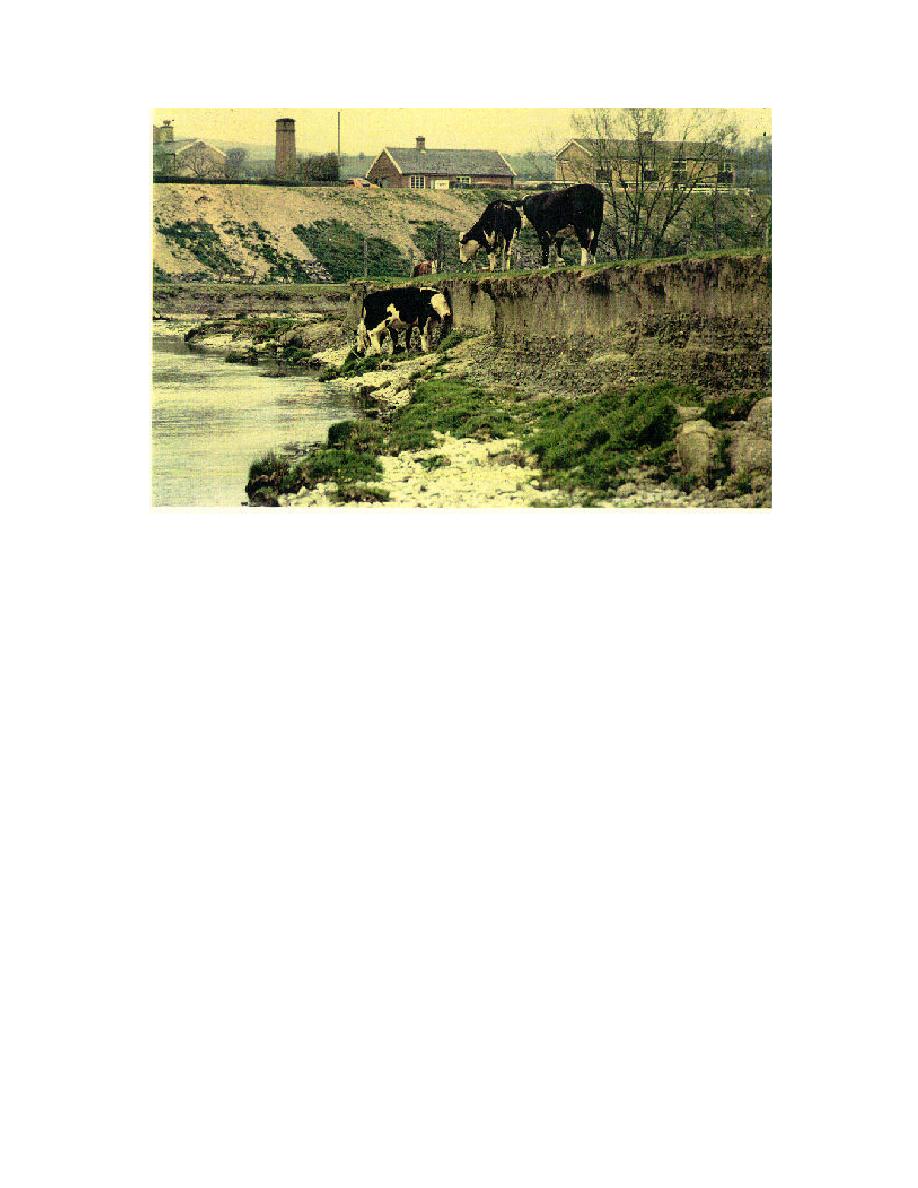
Fundamentals of Fluvial Geomorphology and Channel Processes
Figure 3.39 Cattle Trampling
secondary failures following rotational slips and/or slab failures. Evidence includes: weakly cohesive bank
materials; thin slide layers relative to their area; planar failure surface; no rotation or toppling of failure mass.
Rotational slip is the most widely recognized type of mass failure mode. A deep seated failure
along a curved surface results in back-tilting of the failed mass toward the bank. Such failures are common
in high, strongly cohesive banks with slope angles below about 60o. Evidence includes: banks formed in
cohesive soils; high, but not especially steep, banks; deep seated, curved failure scars; back-tilting of the
top of failure blocks towards intact bank; arcuate shape to intact bank line behind failure mass.
Slab-type block failure is sliding and forward toppling of a deep seated mass into the channel.
Often there are deep tension cracks in the bank behind the failure block. Slab failures occur in cohesive
banks with steep bank angles greater than about 60o. Such banks are often the result of toe scour and
under-cutting of the bank by parallel and impinging flow erosion. Evidence includes: cohesive bank
materials; steep bank angles; deep seated failure surface with a planar lower slope and nearly vertical upper
slope; deep tension cracks behind the bank-line; forward tilting of failure mass into channel; planar shape
to intact bank-line behind failure mass.
Cantilever failure is the collapse of an overhanging block into the channel. Such failures occur
in composite and layered banks where a strongly cohesive layer is underlain by a less resistant one.
Under-mining by flow erosion, piping, wave action and/or pop-out failure leaves an overhang which
collapses by a beam, shear or tensile failure. Often the upper layer is held together by plant roots.
72



 Previous Page
Previous Page
